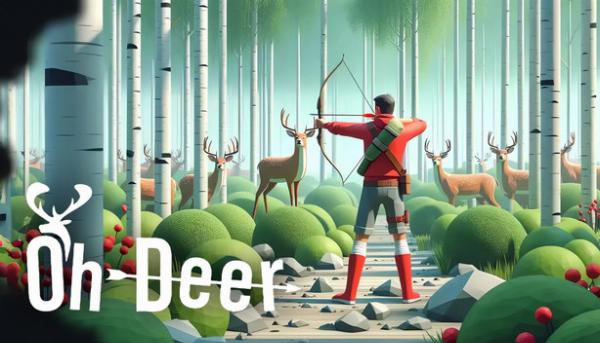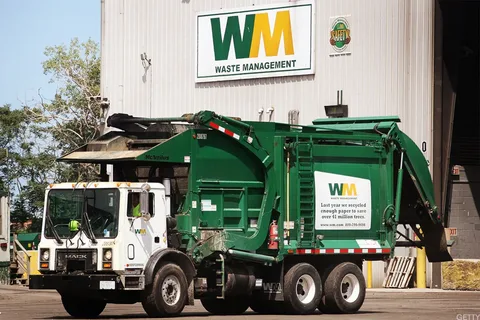Creative Variations of the Oh Deer Game You Can Try

Strong 8k brings an ultra-HD IPTV experience to your living room and your pocket.
If you’re familiar with the popular “Oh Deer” game, you already know how it’s a fantastic way to teach students about ecosystems, the balance of nature, and the importance of natural resources. Whether you’ve found the oh deer wksh pdf free download online or you’re just learning about this engaging activity, there are plenty of ways to put a new twist on the classic game. In this blog, we’ll explore some creative variations of the Oh Deer game that you can try out with your students or in group activities. These variations can help keep the game fresh, fun, and educational for everyone involved.
What is the Oh Deer Game?
Before diving into the variations, let’s briefly recap what the Oh Deer game is all about. The Oh Deer game is an outdoor educational activity that helps students understand the dynamics of ecosystems, specifically focusing on the concept of carrying capacity and the importance of resources like food, water, and shelter.
In the traditional game, students are divided into two groups: “deer” and “resources.” The resources include food, water, and shelter, represented by different hand signals. The deer must find the resource they need to survive by matching the correct hand signal with one of the resources. If they can’t find a match, they “die” and become part of the resources for the next round. The game continues, illustrating how populations of animals fluctuate based on the availability of resources.
Why Try Variations of the Oh Deer Game?
While the traditional version of the Oh Deer game is effective, trying out different variations can help:
Keep the Game Engaging: Introducing new elements can make the game more exciting and challenging for students.
Adapt to Different Learning Objectives: Depending on what you want to teach, variations can help focus on different aspects of ecology, such as predator-prey relationships or human impact on the environment.
Accommodate Different Group Sizes: Some variations can be tailored for larger or smaller groups, making the game more flexible to your needs.
1. Predator-Prey Variation
One of the simplest yet most effective variations of the Oh Deer game is adding a predator-prey dynamic. In this version, you introduce a third group-predators. This group could be represented by a different hand signal, like a claw. The predators’ goal is to “hunt” the deer by tagging them.
Here’s how it works:
Setup: Divide the students into three groups: deer, resources, and predators.
Play: The deer try to find their resources, while predators try to tag them. If a deer finds a resource before being tagged, they survive. If they’re tagged, they become a predator or a resource in the next round.
Objective: This variation teaches about the predator-prey relationship and how predators can affect population dynamics in an ecosystem.
2. Seasonal Variation
Another great variation is to introduce the concept of seasons, which affects the availability of resources and the needs of the deer.
Setup: Create four seasons-spring, summer, autumn, and winter-each lasting a few rounds. The availability of resources changes with each season. For example, in winter, water might be scarce, or in summer, food might be more abundant.
Play: As the game progresses through the seasons, the deer must adapt to the changing availability of resources. If they can’t find the necessary resources for the season, they “die” and become a resource.
Objective: This variation helps students understand how seasonal changes affect wildlife and the availability of natural resources.
3. Human Impact Variation
This variation introduces the concept of human impact on ecosystems, such as pollution, deforestation, or urbanization.
Setup: In addition to deer and resources, introduce a human element. This could be represented by a student or group who controls a certain area of the playing field, making it off-limits or reducing the number of resources available.
Play: As the human element changes the environment, deer find it more challenging to locate resources. For example, pollution might reduce the water supply, or urbanization might take away shelter.
Objective: This variation is excellent for teaching students about the impact of human activities on wildlife and natural resources.
4. Ecosystem Web Variation
In this more complex variation, you expand the game to represent an entire ecosystem, including multiple species and resources.
Setup: Instead of just deer, include other animals that require different resources. For instance, rabbits might need food and shelter, while birds need water and trees (shelter).
Play: Each species must find its specific resources to survive. If a species can’t find its resources, it “dies” and becomes part of the ecosystem’s resources for the next round.
Objective: This variation teaches about the interdependence of species within an ecosystem and how different animals rely on different resources to survive.
5. Survival Challenges Variation
Introduce various survival challenges that can occur randomly during the game. These could include natural disasters, disease, or extreme weather conditions.
Setup: Write down different challenges on slips of paper and draw one at random every few rounds. These challenges can either reduce the number of available resources or affect the deer population directly.
Play: For example, if a drought is drawn, the number of water resources is reduced for a few rounds. If a disease is drawn, a portion of the deer population might be “wiped out.”
Objective: This variation helps students understand the impact of unexpected events on ecosystems and how they can drastically change the survival rates of species.
6. Resource Scarcity Variation
In this variation, the number of resources starts high but gradually decreases as the game progresses, simulating a situation where natural resources become scarce over time.
Setup: Begin with an ample number of resources. After each round, reduce the number of resources slightly by removing one or two students from the resource group.
Play: As resources become scarcer, deer must compete more fiercely for what remains. This could lead to more deer “dying” and joining the resource pool.
Objective: This variation teaches about the concept of resource scarcity and how it affects population dynamics in an ecosystem.
7. Population Boom Variation
This variation simulates a population boom, where the number of deer suddenly increases due to favorable conditions, but resources remain the same.
Setup: Start with a normal number of deer and resources. After a few rounds, significantly increase the number of deer without increasing resources.
Play: The deer must now compete even more for the same amount of resources, leading to increased competition and more “deaths.”
Objective: This variation helps students understand how population booms can lead to overpopulation, resource depletion, and eventual population crashes.
FAQs About the Oh Deer Game
Q: What is the main purpose of the Oh Deer game?
A: The main purpose of the Oh Deer game is to teach students about ecosystems, the balance of nature, and the importance of natural resources like food, water, and shelter in maintaining healthy animal populations.
Q: How can I access the Oh Deer game materials?
A: You can often find the materials you need for the Oh Deer game through educational resources online. A simple search like oh deer wksh pdf free download can provide worksheets and instructions that you can use to guide the game.
Q: Can the Oh Deer game be adapted for different age groups?
A: Yes, the Oh Deer game is highly adaptable and can be modified to suit different age groups. For younger students, keep the game simple with basic concepts, while older students can handle more complex variations, like adding predators or human impacts.
Q: How many players are needed to play the Oh Deer game?
A: The game can be played with a group of at least ten players, but it works best with larger groups. The more players you have, the more dynamic and engaging the game becomes.
Q: What concepts does the Oh Deer game teach?
A: The Oh Deer game teaches various ecological concepts, including the importance of natural resources, carrying capacity, predator-prey relationships, seasonal changes, and the impact of human activities on ecosystems.
Q: How long does a typical game of Oh Deer last?
A: A typical game of Oh Deer can last anywhere from 15 to 30 minutes, depending on the number of rounds you play and the variations you introduce. You can adjust the length of the game to fit your schedule.
Conclusion
The Oh Deer game is a powerful educational tool that can help students grasp important ecological concepts in a fun and interactive way. By trying out these creative variations, you can keep the game engaging and tailor it to meet specific learning objectives. Whether you’re teaching about predator-prey relationships, the impact of human activities, or the challenges of resource scarcity, the Oh Deer game offers endless possibilities for exploration and learning.
So, next time you’re planning an outdoor activity or lesson, consider introducing one of these variations to the Oh Deer game. Not only will your students enjoy the challenge, but they’ll also walk away with a deeper understanding of the natural world around them.
Keep visiting indibloghub for more informative blogs.
Note: IndiBlogHub features both user-submitted and editorial content. We do not verify third-party contributions. Read our Disclaimer and Privacy Policyfor details.







